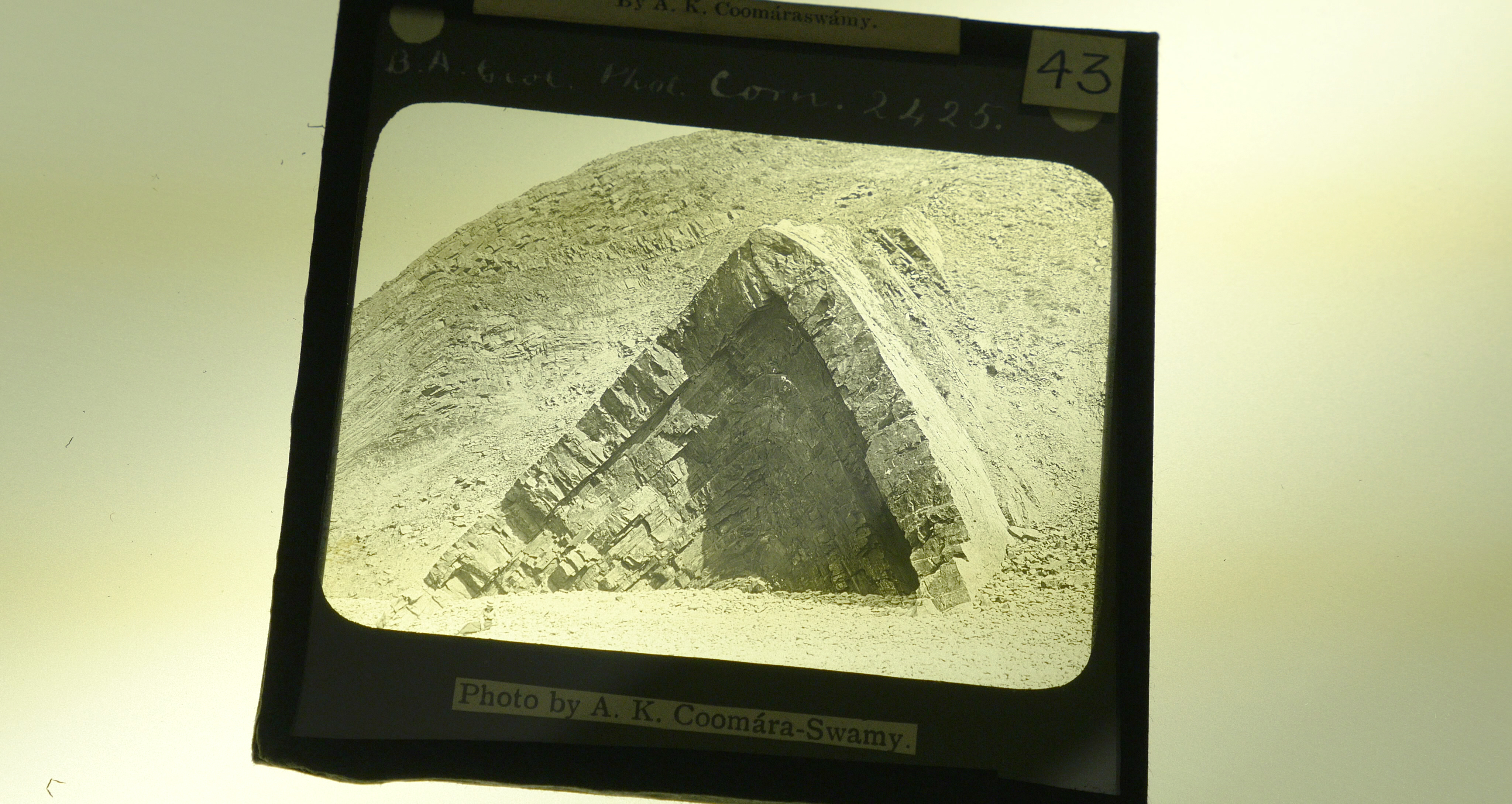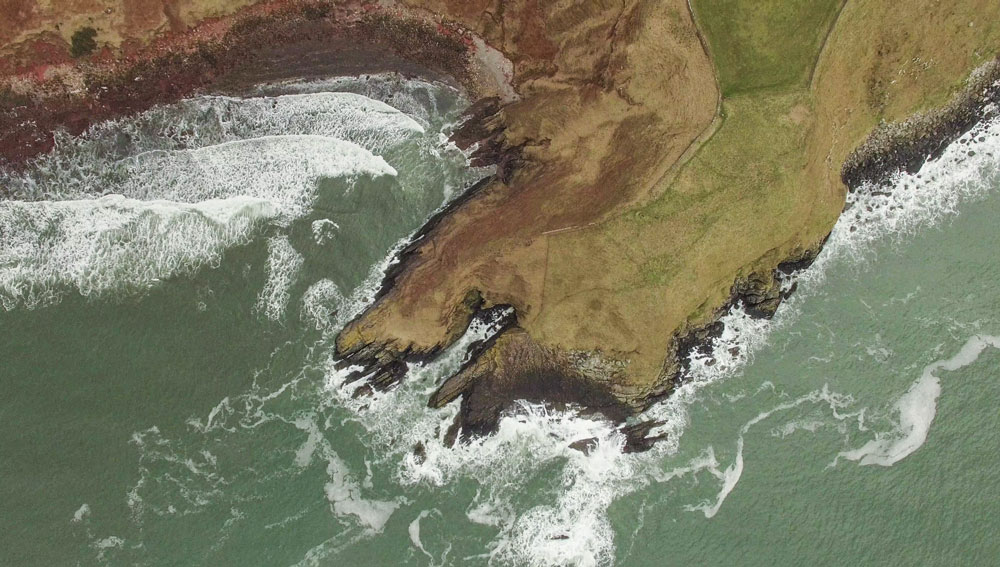Steve Rowell
Humans Lived Here Once
2017/2021
"The first time I recognized the clouds brought by the plague-wind as distinct in character was in walking back from Oxford, in the early spring of 1871"
– John Ruskin, 1888, The Storm Cloud of the Nineteenth Century.
Humans Lived Here Once (2017/2021) is a film rooted in experimental documentary, presented as a meditation on deep time, the geological, and the existential threats of climate change and technology. These forces act as specters which are deeply intertwined with our daily lives.
We are forever entangled with our own destructive potential. Britain, home of the industrial revolution and the first computer, is the landscape featured. As a former empire, its misapplied inventions have spawned a global acceleration of doom. The work is structured around a journey that begins in melancholy and entropy, moving sequentially toward the hopeful perspective of the Overview Effect.
We are forever entangled with our own destructive potential. Britain, home of the industrial revolution and the first computer, is the landscape featured. As a former empire, its misapplied inventions have spawned a global acceleration of doom. The work is structured around a journey that begins in melancholy and entropy, moving sequentially toward the hopeful perspective of the Overview Effect.
The Recursive Cascade and the View from Orbit
The film's opening sequence is composed of shots around Oxford, immediately foretelling the ominous rise of Artificial Intelligence, linking the UK's history as a birthplace of computing with future existential threats. This technical focus then establishes the film's core concept: recursive cascades—events which start small and grow exponentially in a runaway feedback loop (growth -> extraction -> damage -> more growth), often leading to disruption and extinction.
The journey then interweaves fiction, drawing from an audio version of J.G. Ballard's Prisoner of the Coral Deep, which frames the core human impulse as a ghost story—a primal desire to regress to a pre-conscious, non-human past (Deep Time). The film explores the ground truth of Britain through landscapes of industrial scars, coal mines, and flood barriers, layered with visual evidence of history: extinct and endangered animal remains, and slides from early geological explorations.
The visual language is deeply informed by 19th-century art, connecting John Ruskin's early observations on industrial "plague-wind" to key paintings. William Dyce's Pegwell Bay, Kent, a Recollection of October 5th 1858 which links terrestrial detail and geological strata with a cosmic event (Donati’s Comet), merges the real site with the fictional Ballardian ghost story. This is contrasted with William Wyld's Kersal Moor, where drone footage over the same moor contrasts the historical industrial view with the distant, modern glare of Manchester.
The film uses the Apollo 17 mission recordings (featuring Harrison Schmitt, the photographer of the iconic Blue Marble image) as its narrative spine, often paired dramatically with these terrestrial scenes. For instance, the audio over the Kersal Moor sequence is the Apollo 17 conversation between Mission Control and Schmitt, including the distinct shutter sounds of the photo being taken while Schmitt speaks in awe about seeing the planet as a fragile blue object. This serves as the film’s Optimistic Conclusion, offering the astronaut’s profound moment of recognizing Earth as a single, fragile system and a shift from despair to potential course correction.
Ultimately, the film asks whether the profound change in perspective offered by the Overview Effect can interrupt the destructive loops our inventions set in motion.
Humans Lived Here Once
22:00 HD single channel video with 5.1 sound, CNC router carved styrofoam model of NASA photograph AS17-148-22727 “The Blue Marble”, blue styrofoam dust
2017 (Oxford edit) /2021 (final edit)
This film was supported by a Erna Plachte scholarship at the University of Oxford and a 2019 Guggenheim Foundation fellowship.


- Blackwater Estuary National Nature Reserve, Essex
- The Future of Humanity Institute, Littlegate House, Oxford
- Oxford Science Park, Oxford
- Bletchley Park Science and Innovation Centre, Milton Keynes
- Boulton, Watt and Murdoch gilded bronze monument to the industrialists, Birmingham
- Shotover Country Park, Oxford
- Hoh Rainforest, Olympic National Forest, Pacific Northwest, USA
- The Iron Bridge (first in the world), River Severn, Telford
- Clee Hill oldest (neolithic) known coal mine on Earth (disused) and radar site, South Shropshire
- Bank of England, City of London
- Big Pit National Coal Museum, Blaenavon, Wales
- Ffos-y-Fran coal mine (disused) and tailings piles, Merthyr Tydfil, Wales
- White Rock Copper Smelter (ruin), Lower Swansea valley, Wales
- Magdalen College, Oxford
- Balliol College, Oxford
- Museum of the History of Science, Oxford
- Bodleian Library, Oxford
- Grant Museum of Zoology, London
- Oxford University Museum of Natural History, Oxford
- HEIR Lantern Slide Collection, Radcliffe Science Library, Oxford
- Tate Britain, London
- Hutton’s Geological Unconformity / Deep Time site, Siccar Point, Berwickshire, Scotland
- Serpentine rock outcropping , Kynance Cove, Cornwall
- Shipwrecks at Hoo Peninsula, River Medway, Kent
- Tate Britain, London
- Broomway tidal flat pathway, Maplin Sands, Essex
- Martello Towers Beach, Bawdsey, Suffolk
- Orfordness-Havergate National Nature Reserve, Suffolk
- The Moon
- Thames Barrier, River Thames, Woolwich, London
- Woolwich Ferry Centre, River Thames, Woolwich, London
- Keyworth Core Store, British Geological Survey, Nottingham
- Apollo 17 spacecraft 29,000 km (18,000 miles) from the Earth.
- Otmoor, Oxfordshre West Nab, Peak District National Park, West Yorkshire
- Royal Collection Trust, Windsor Castle, Windsor
- Kersal Moor, Salford, Manchester
- Hoh Rainforest, Olympic National Forest, Pacific Northwest, USA
- Christ Church Meadow, Christ Church College, Oxford
Acknowledgments:
- Professor Gervase Rosser, History of Art Department, U Oxford
-
Ghislaine Leung & John Cussans, Ruskin School of Art, U Oxford
-
Teresa Gleadowe, Cornubian Arts & Science Trust (CAST)
- Professor Timothy Morton, Rice University
- Professor Stephen Graham, School of Architecture, Planning & Landscape, Newcastle University
-
Priyanka Basu, Getty Research Institute
- Patrick Keiller
- Professor Nick Bostrom, Future of Humanity Institute, U Oxford
-
Dr Katharina Ulmschneider & Dr Sally Crawford, Historic Environment Image Resource (HEIR), Institute of Archaeology, U Oxford
-
Dr David Chivall, Research Laboratory for Archaeologyand the History of Art, U Oxford
-
Carly Collier, Royal Collection Trust, Windsor Castle







